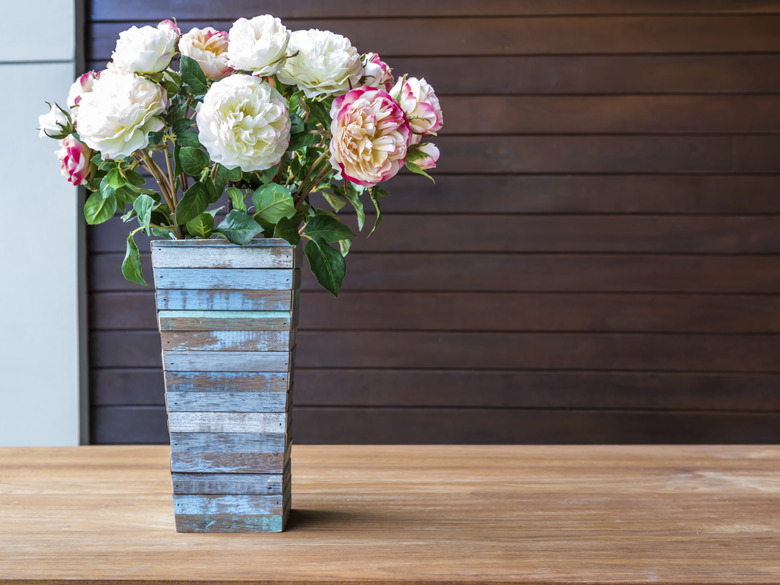What Is The Difference Between Visual Texture And Tactile Texture In Design?
The word "texture" refers to how an object feels when you touch it; thus, the implication is that the word always refers to a tactile item. However, you can receive an impression of texture just by simply looking at an object or a pattern, an important principle in interior design. Visual textures can affect the mood and atmosphere of a room as much as tactile textures, and you can create an impression of texture with little more than paint.
Tactile Textures
Tactile Textures
Tactile textures have relief, 3-D characteristics that you can feel. A wall textured with joint compound and a roughhewn tabletop are two examples of textures with relief; a fuzzy chair cover is an example of a texture you may have to actually touch to appreciate. Textures with 3-D presence often reflect light differently from one angle in a room than from another, which can give the room discrete vantage points that may differ greatly from one another. The overall effect of this type of visual partitioning is to make a room feel smaller.
Visual Textures
Visual Textures
Patterns painted on the the wall or ceiling may not be 3-D, but as far as the eye is concerned, they are just as real as tactile textures. A sponge-painted wall is an example of a texture that greatly alters the atmosphere of a room without adding physical definition. Visual textures don't play with light in the same manner as tactile textures, but they still create intimacy, mostly by adding visual information. Whether you add visual texture to your walls and ceiling with paint, wallpaper or paneling, the surfaces remain essentially smooth but have the appearance of texture.
Information and Intimacy
Information and Intimacy
Because of the way they absorb and reflect light, textures make a room feel smaller. You can use this principle to make a large, well-lit living room feel less spacious and more intimate. Because visual textures work primarily by adding visual information to a room's decor, however, they don't always work with the furniture or the pattern of the hardwood floor. In this case, a designer may opt for tactile texture in the form of a skip-trowel or slap-brush wall finish, which creates light variations without the need for more colors that could clash with the hues already present.
Light and Weight
Light and Weight
Textures can suggest temperature as well as alter the perception of space. A smooth texture reflects light and can look metallic, while a soft and raised texture absorbs light and suggests comfort. Visual textures may appear substantial from a certain vantage point, but when the light shines from a different angle, the smooth surface can make a room feel simultaneously smaller and less intimate. Tactile textures, on the other hand, never reflect light this way, so they often have a warming effect. By adding weight, they can help create a closed-in, cozy feeling.
